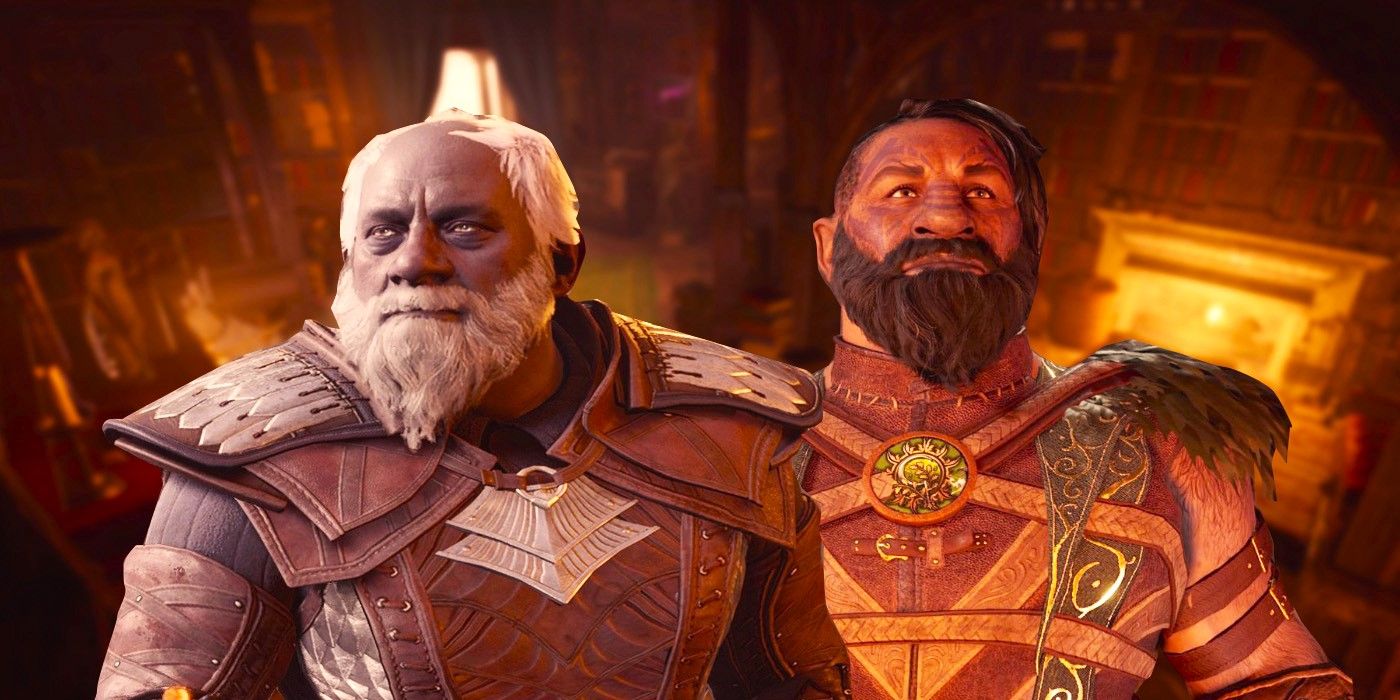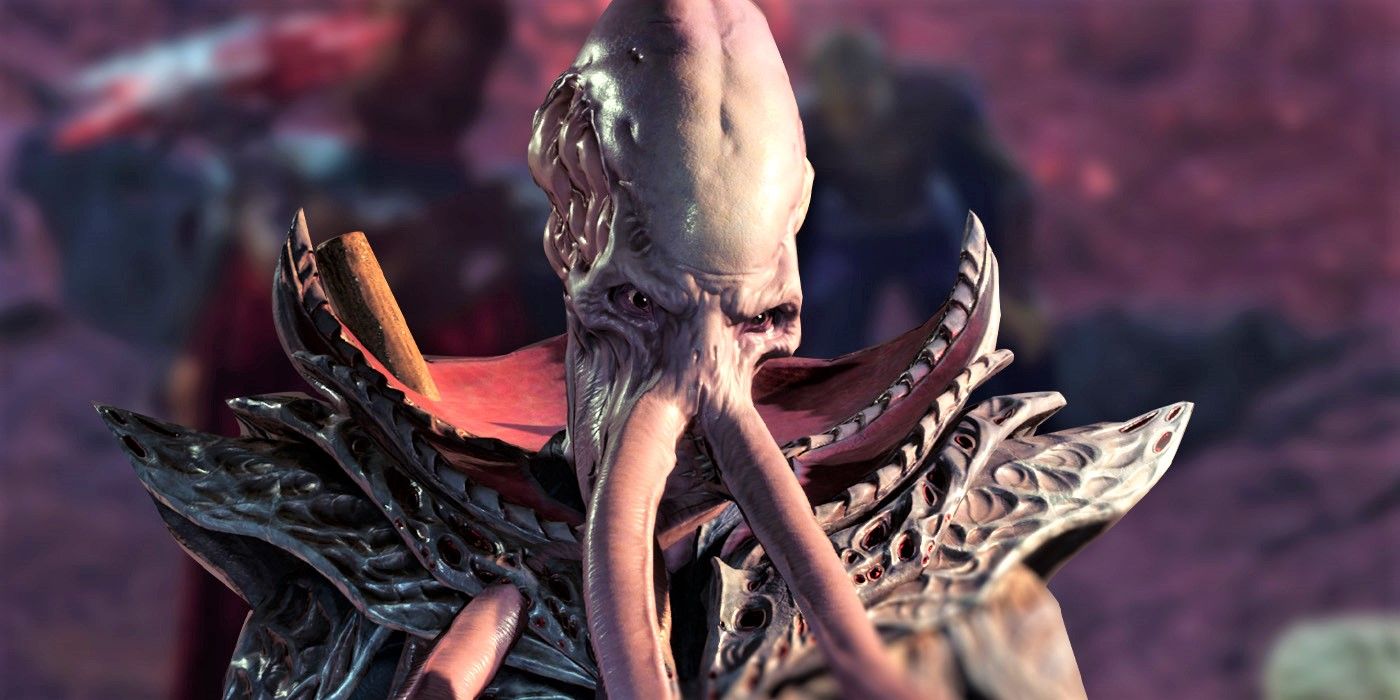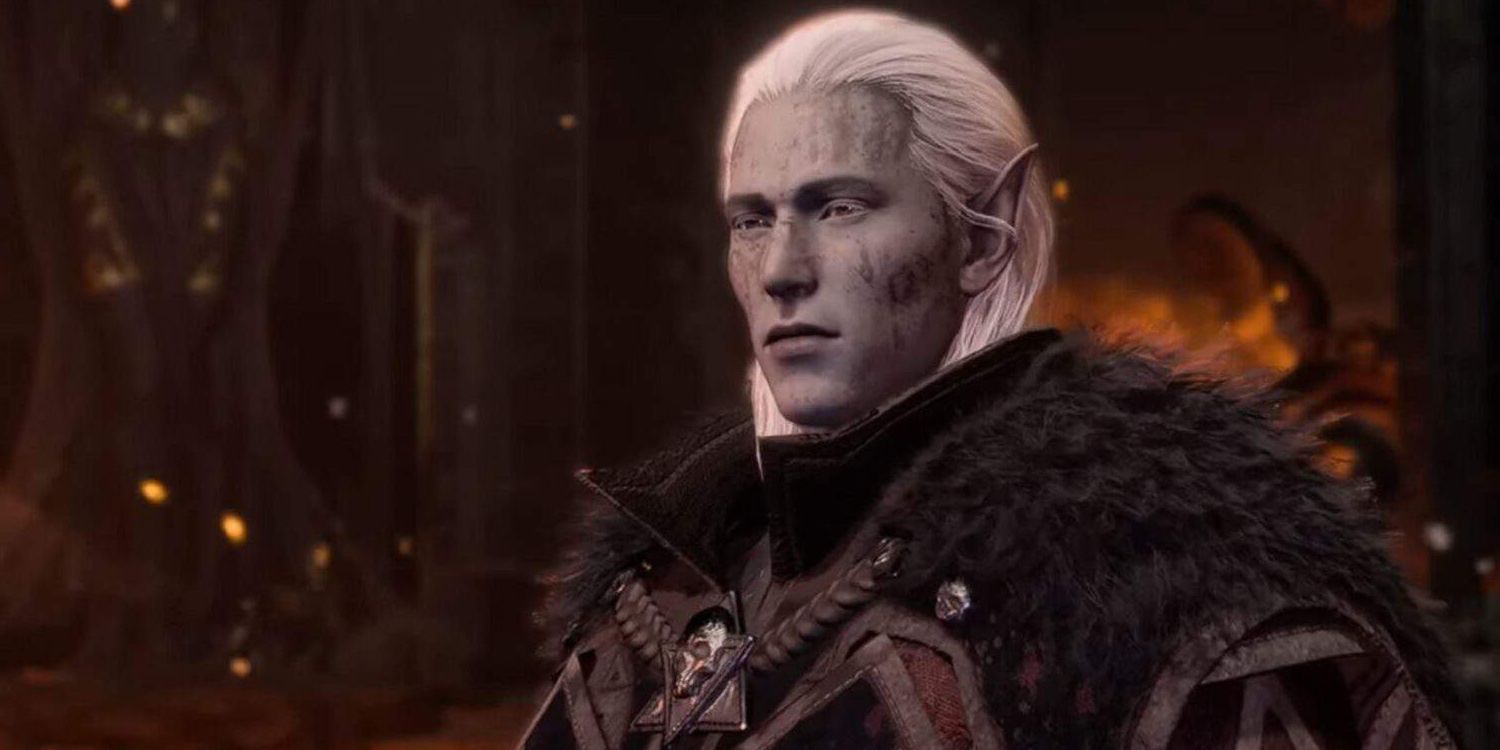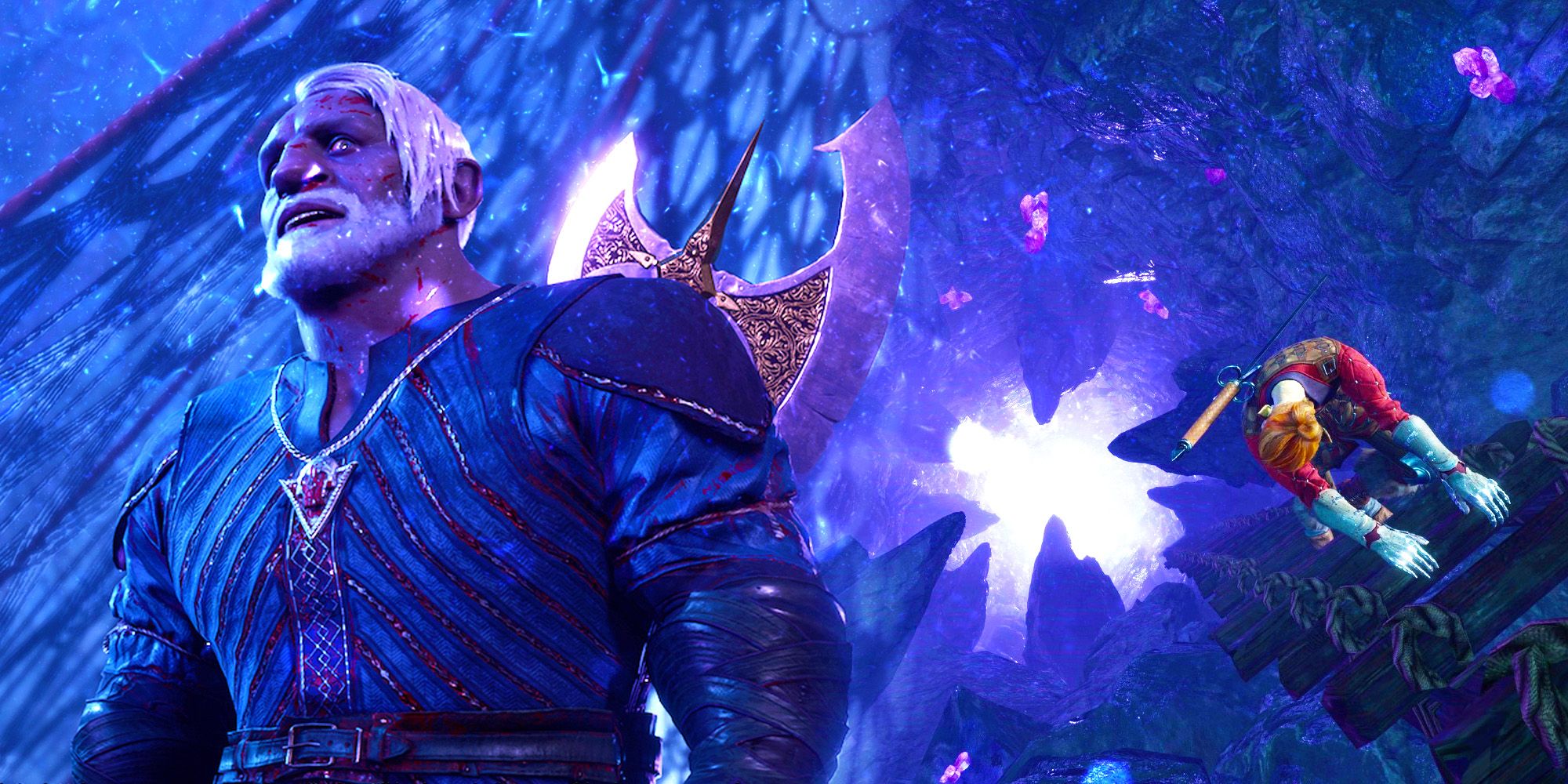Summary
- Dwarves in Baldur's Gate 3 are underutilized, with few of them as main characters.
- Dwarves have significant advantages over mind flayers in the tabletop version of D&D.
- The game overlooks this interesting tidbit of D&D lore, opening up numerous unresolved questions about some of its dwarf side characters.
Dwarves may represent one of the biggest missed opportunities in Baldur's Gate 3. There are relatively few prominent main characters of the smaller races sprinkled throughout the entire game. There may be a handful of goblins in the camp, but they either die at the party's hands or are left behind after Act One of Baldur's Gate 3. There are the deep gnomes and duergar of the Grymforge and Moonrise Towers, but again, they either die or disappear. There may be the occasional halfling, dwarf, or gnome in the lower city, but most only appear briefly. In fact, many dwarves appear in the game, but most of them don't stick around.
It's not necessarily the worst fate. Dwarves don't get as much hate as drow in Baldur's Gate 3. Many of them are well-liked, friendly characters, and some of them hold positions of great power. Other playable Dungeons & Dragons races are left out of the game entirely. Yes, players can create a dwarf character, even though they still can't be a full-blooded orc, aasimar, triton, goliath, et cetera. The problem is, Baldur's Gate 3 overlooks an interesting tidbit of DnD lore that could have made dwarves some of the most interesting, even tragically heroic characters in the game.
In D&D Lore, Dwarves Are Immune To Ceremorphosis
According to the lore of the Forgotten Realms setting for the tabletop game, DnD's dwarves (and by extension, BG3's too) should be immune to ceremorphosis. The term "ceremorphosis" refers to the process of transformation into an Illithid, or mind flayer, by the implantation of a tadpole parasite into a humanoid's head. This happens to several people throughout the Forgotten Realms during the Illithids' attempt to take over. Most prominently, every Origin character in Baldur's Gate 3 is infected with a parasite that should cause them to undergo ceremorphosis - however, as they soon discover, something is slowing the process down.
But dwarves can't be turned into mind flayers, forcibly or otherwise. Per Forgotten Realms lore, Illithids prefer specific races for parasitic infection: humans, elves, drow, githyanki, githzerai, grimlocks, gnolls, orcs, and larger goblinoids like hobgoblins and bugbears. Through what must have been years of painstaking trial and error, Illithids discovered that larger or smaller individuals don't take well to ceremorphosis. Larger people tend to cause tadpoles to evolve too slowly, while smaller ones may cause them to evolve too quickly. As a result, implanting tadpoles in smaller humanoids, like dwarves, usually results in the death of both parasite and host.
Of course, this doesn't mean every dwarf is completely immune to Illithid influence. There are certainly fringe cases in which ceremorphosis is possible, along with mind flayers who aren't averse to using more immediately violent means to rid themselves of bothersome dwarves. However, as a result of their resistance, dwarves and gnomes are generally seen as ineligible candidates for Illithid transformation. That could have given them a significant advantage in Baldur's Gate 3.
BG3 Does True Souls And Ceremorphosis Wrong
There don't happen to be many dwarf or gnome characters in Baldur's Gate 3 with parasite specimens in their heads, and those few who do exist don't seem to feel any of these unique effects. Parasite hosts are divided into two categories: full-blown Illithids and True Souls. The former refers to completely ceremorphosed mind flayers, and the latter to leaders in the Cult of the Absolute. True Souls, like the Origin characters in the party, haven't undergone full transformation yet. However, they are afforded special Illithid Powers by the tadpoles burrowing into their brains.
Most True Souls are drow, like Nere and Minthara. But as a matter of fact, there are plenty of dwarves (among members of other small races) in the Cult of the Absolute. Most of them are duergar, a subrace of dwarves who thrive in the Underdark, and at least one has reached the rank of True Soul. That's Edowin, who dies off-screen before the party ever meets him. However, the cause of his death isn't botched ceremorphosis so much as it is an angry owlbear. Another small character, the goblin healer Priestess Gut, is a True Soul, and she also seems to be doing fine.
But should this really be possible? Shouldn't these two have been considered unfit to host tadpoles, or have died of accelerated ceremorphosis? Are they just exceptionally lucky, or is the delayed ceremorphosis that's keeping the main party safe exerting a similar effect on them? This isn't really a plot hole so much as it is an unanswered question that DnD lore diehards are sure to spot.
How BG3's Ceremorphosis Could've Looked
There are many ways in which Baldur's Gate 3 could have addressed the particulars of dwarven ceremorphosis. Simply explaining that the ceremorphosis of the few dwarf and goblin True Souls has been halted would be enough, but taking it in other directions could make for interesting character moments. For example, power-hungry duergar like Gekh Coal, or those at the Grymforge conspiring to kill True Soul Nere, could have willingly undergone tadpole implantation in order to gain an edge. Of course, if they were subject to the accelerated ceremorphosis typical to those of their stature, they'd have died for their hubris.
Alternatively, there could have been heroic dwarves who willingly sacrificed themselves by hosting parasites, knowing that the worst that could happen was death. Or, dwarf warriors could have participated in some large-scale attack on Illithid infrastructure at the game's climax. The image of dwarven throngs invading the Mind Flayer Colony, boarding Nautiloids, and smashing specimen jars would have been a thrilling inclusion. It also would've given more agency and character to members of a DnD race that's often sidelined, or made into the butt of a joke.
In the end, the lack of acknowledgment around this obscure factoid just feels like an oversight or a loose end. DnD lore can be incredibly complicated, and it's easy to miss the little things. While some things were certainly changed or omitted intentionally when making the jump from tabletop to video game, other minor details likely just flew under the radar. Still, there's always potential for more exploration of dwarves and their relationship to ceremorphosis in DLC for Baldur's Gate 3.




